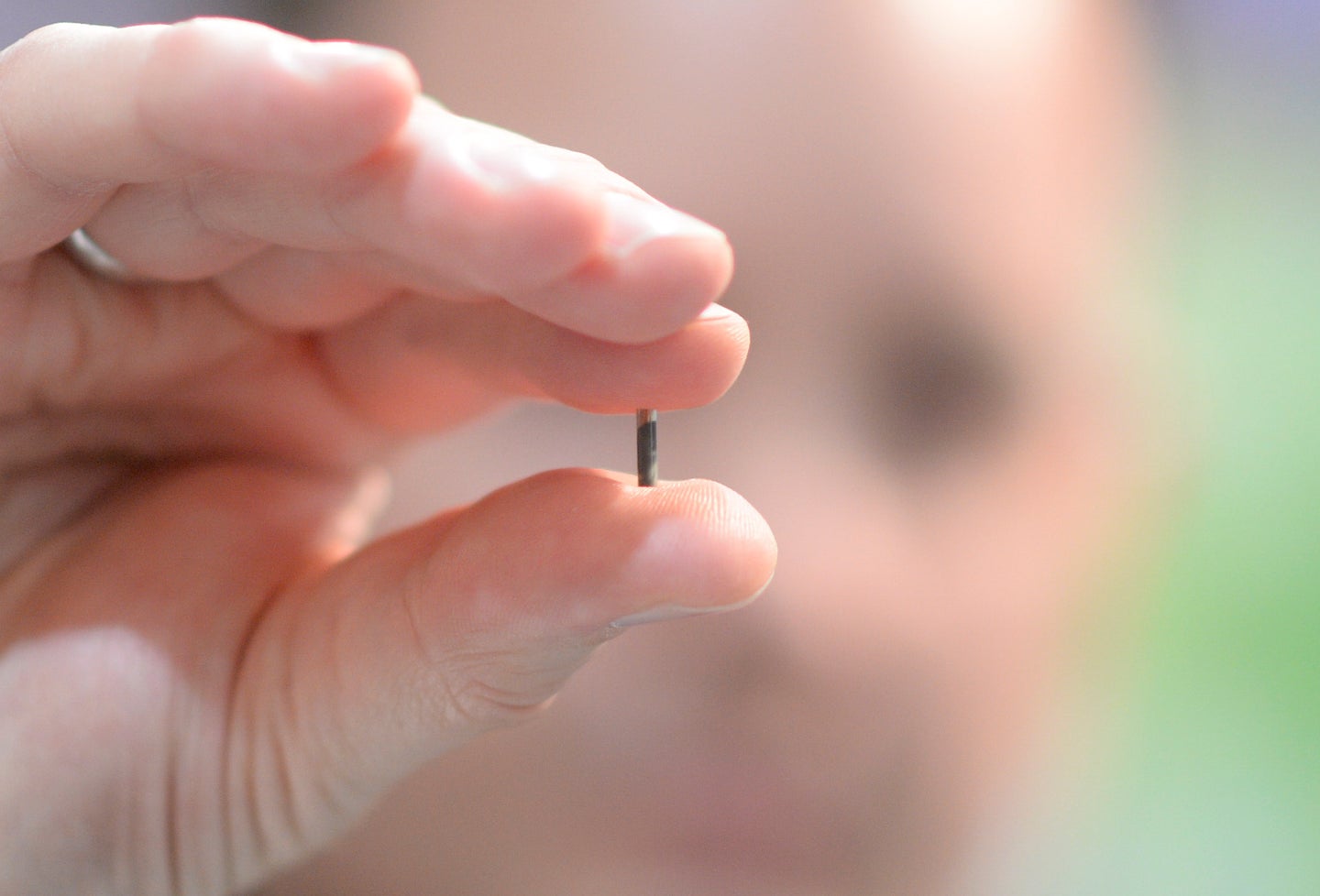Scientists have figured out how to stop our bodies from fighting electronic implants
Scar tissue may no longer be an obstacle on our road to becoming cyborgs


An employee of digiwell shows a RFID-Chip which can be engrafted in a person’s hand at CeBIT trade fair in Hannover
We may dream of one day becoming cyborgs, with RFID chips implanted in our hands or bionic eyes, but the human body won’t necessarily cooperate. Implantable devices like pacemakers have been used regularly for decades, but they often encounter a build-up of scar tissue, or fibrotic tissue around the implants that can hinder functionality. Now, biologists have figured out a way to fight that process without seriously compromising the entire immune system.
“The fundamental problem is that implanted materials get covered with scar tissues, and that can inhibit their function,” Daniel Anderson, a biomedical engineer at MIT’s Koch Institute for Integrative Cancer Research, says. Something like a splinter, or anything alien to the body like a pacemaker or an under-skin glucose monitor, can be identified as “non-self,” he says. “Our bodies are designed to protect ourselves, but attack foreign objects.” With pacemakers specifically, Anderson says that scar tissue can even affect their electrical transmission.
But, there’s good news. Anderson is the senior author on a new study in the journal Nature Materials that reports a way to stop this process from happening; their discovery involves using drugs to affect the behavior of a type of immune system cell called a macrophage in a way that prevents the buildup of scar tissue, but doesn’t stop the body’s immune system from doing all the good things it’s supposed to do, like fight infection or heal wounds.
Anderson chuckles at the suggestion of a science-fiction future in which humans commonly have devices implanted into them to augment their daily lives, instead focusing on medical problems of the present. “There are these devices now that many people use,” he says, referring to the likes of insulin pumps and glucose sensors. “The list of devices continues to get even longer, and so it’s already happening, and certainly there’s going to be more and more interesting work in these areas.”
Joshua Doloff, a bioengineer and postdoctoral researcher at the Koch Institute for Integrative Cancer Research, and the study’s first author, says that the drugs used to stop the scar tissue response could even be given to the patient via the implantable device– “on it, or inside of it,” he says.
They “want to be able to deliver the drug directly from the device itself, right outside into the local environment,” Doloff says. Their research involved materials like ceramic and polystyrene, as well as testing with mice and monkeys.
Gordana Vunjak-Novakovic, a professor of biomedical engineering at Columbia University who was not involved in the study, agrees that the study tackles a “major medical problem.”
“They found a real mechanism behind the formation of the fibrotic tissue which is always, always surrounding anything that you implant into the body,” she says. And knowing the cause can help you prevent the problem from happening in the first place.
Doloff, of MIT, says that the natural process that causes scar tissue to form around foreign devices, a kind of “cloaking” or “sequestering” by the body, is a strong one.
“It’s basically ‘resistance is futile’ and your body is going to overgrow anything it wants to, and there’s nothing you can do about it,” he says, using a phrase uttered by the fictional Borg species of “Star Trek,” famous for being part machine and part biological. “But this is a way, now, we are able to prevent that.”
